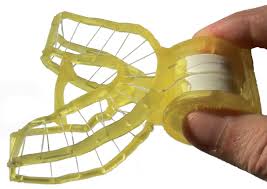
Breaking News
 Walz Drops Out Of Governor's Race Amid Somali Fraud Scandal
Walz Drops Out Of Governor's Race Amid Somali Fraud Scandal
 Maduro & His Wife Plead Not Guilty In NY Federal Court As Rival Protests Rage Outside
Maduro & His Wife Plead Not Guilty In NY Federal Court As Rival Protests Rage Outside
 Silver: Dept. of War to Build Metals Refinery in Blow to China - With JPMorgan Financing the Deal
Silver: Dept. of War to Build Metals Refinery in Blow to China - With JPMorgan Financing the Deal
 THEY ARE PANICKING: U.S. Gov Spends $7.4B to Secure Silver Before It's Gone
THEY ARE PANICKING: U.S. Gov Spends $7.4B to Secure Silver Before It's Gone
Top Tech News
 Laser weapons go mobile on US Army small vehicles
Laser weapons go mobile on US Army small vehicles
 EngineAI T800: Born to Disrupt! #EngineAI #robotics #newtechnology #newproduct
EngineAI T800: Born to Disrupt! #EngineAI #robotics #newtechnology #newproduct
 This Silicon Anode Breakthrough Could Mark A Turning Point For EV Batteries [Update]
This Silicon Anode Breakthrough Could Mark A Turning Point For EV Batteries [Update]
 Travel gadget promises to dry and iron your clothes – totally hands-free
Travel gadget promises to dry and iron your clothes – totally hands-free
 Perfect Aircrete, Kitchen Ingredients.
Perfect Aircrete, Kitchen Ingredients.
 Futuristic pixel-raising display lets you feel what's onscreen
Futuristic pixel-raising display lets you feel what's onscreen
 Cutting-Edge Facility Generates Pure Water and Hydrogen Fuel from Seawater for Mere Pennies
Cutting-Edge Facility Generates Pure Water and Hydrogen Fuel from Seawater for Mere Pennies
 This tiny dev board is packed with features for ambitious makers
This tiny dev board is packed with features for ambitious makers
 Scientists Discover Gel to Regrow Tooth Enamel
Scientists Discover Gel to Regrow Tooth Enamel
 Vitamin C and Dandelion Root Killing Cancer Cells -- as Former CDC Director Calls for COVID-19...
Vitamin C and Dandelion Root Killing Cancer Cells -- as Former CDC Director Calls for COVID-19...
Blizzident promises one bite flossing

The American Dental Association, like many oral hygiene bodies around the globe, recommends cleaning between teeth at least once per day. Generally, this is done using a strand of dental floss to get into the small gaps that toothbrushes just can't reach. Though important, it does take time. What if you could floss all your teeth in one bite? That's what Blizzident is promising with its 3D-Flosser.
In 2013, Blizzident released a tailored toothbrush design which looked like a mouth guard that had melted in a microwave oven, and was claimed to give teeth a full and complete clean in just 6 seconds.
Before folks could get their funny-looking toothbrush though, they would need to visit a dentist to get a 3D scan or impression made. This would be sent to Blizzident, and a 3D-printed "negative" of the teeth produced, and lined with angled bristles. Brushing was then a simple matter of biting up and down, and having a good old grind.
The pre-production process for the 3D-Flosser is similar. Once Blizzident receive a customer's 3D scan, a user-specific frame is made. Four rolls of dental floss in the grip are fed through channels in the frame so that each gap in a user's teeth is covered by a short strand of floss. All a rapid flosser has to do is bite down on the frame, and the floss slides between the teeth to a depth of around 2 mm. Job done.



